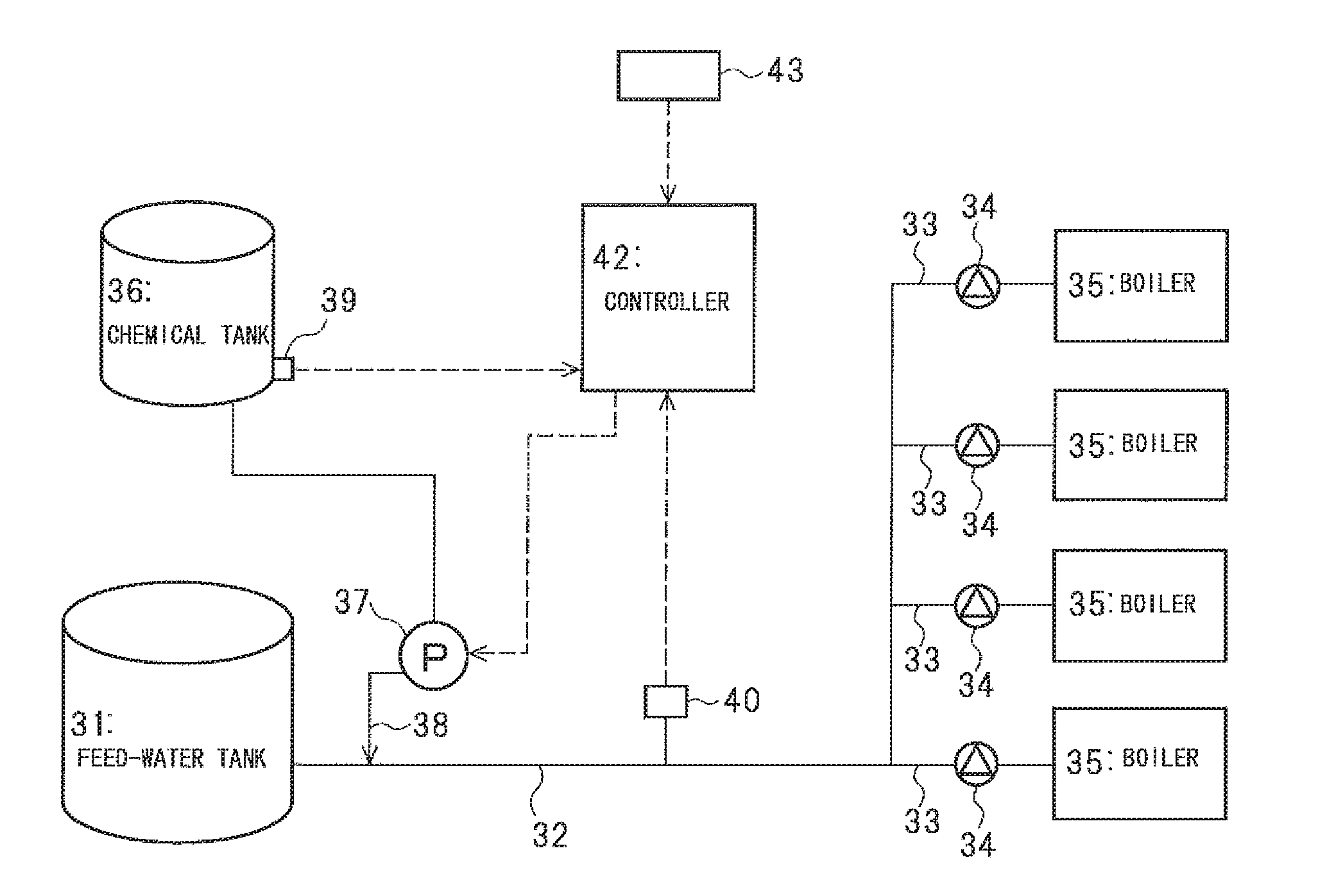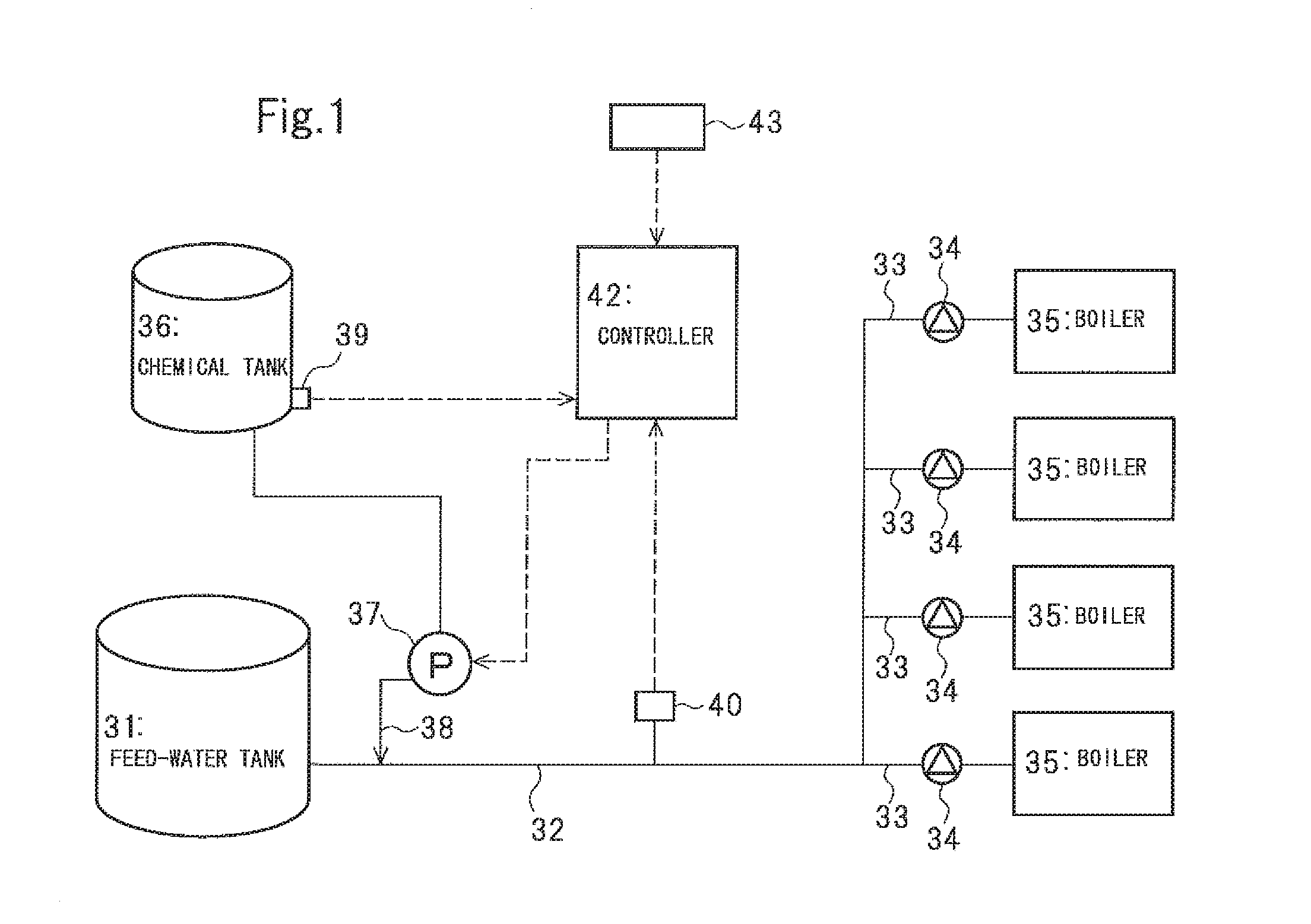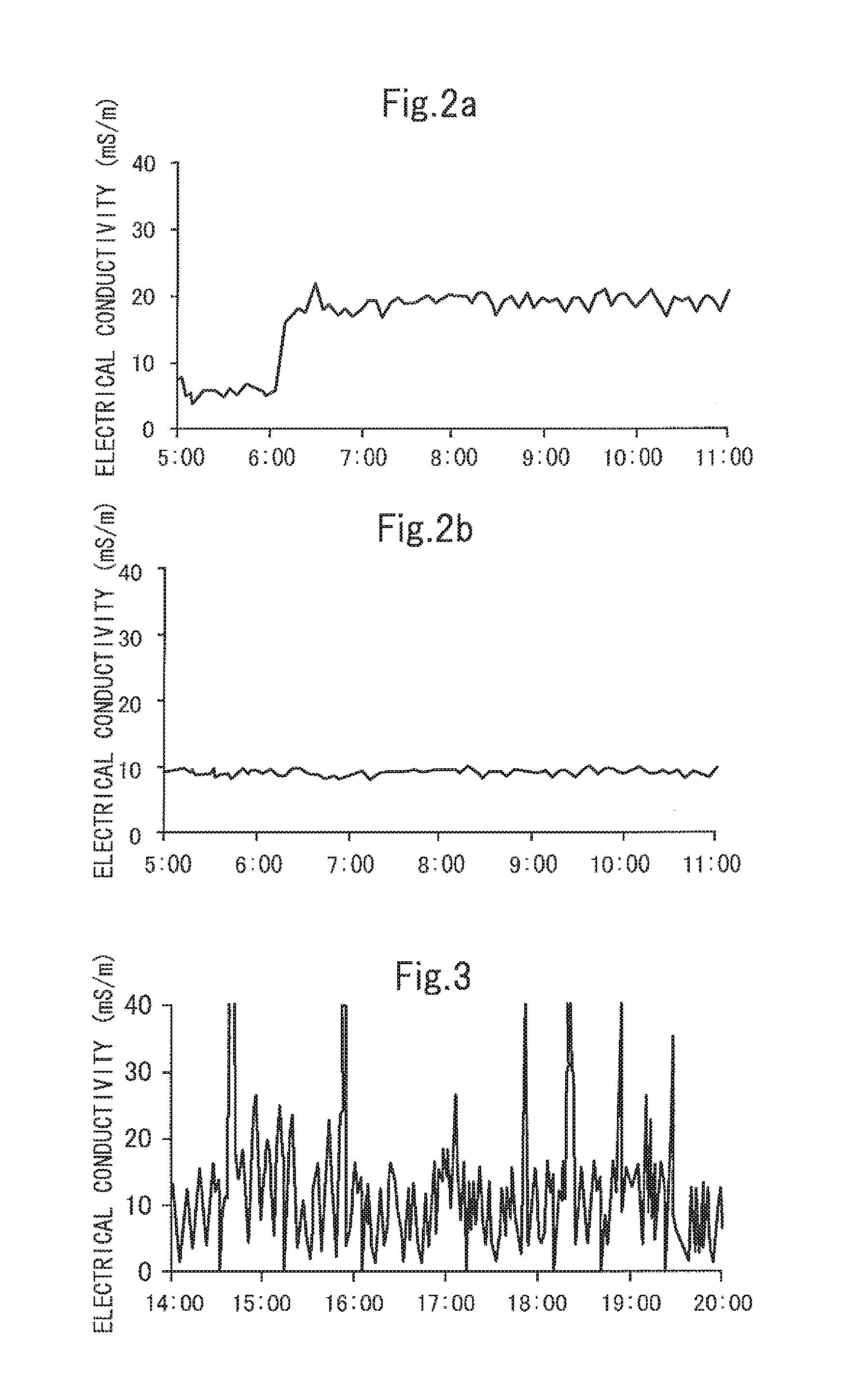Device and method for controlling chemical injection into boiler
a technology of chemical injection and boiler, which is applied in the direction of treatment control/steering, lighting and heating apparatus, corrosion-reducing boiler components, etc., can solve the problems of pump deformation, pump failure, and variable flow rate of feed-water, so as to prevent the occurrence of scale, prevent the effect of scale and proper blowing control
- Summary
- Abstract
- Description
- Claims
- Application Information
AI Technical Summary
Benefits of technology
Problems solved by technology
Method used
Image
Examples
example 1-1
[0073]Under control according to the method of the present invention, the chemical liquid was injected into the feed-water main pipe 32 in the facility, illustrated in FIG. 1 on condition that the target chemical concentration in the feed-water was 100 mg / L. The facility was equipped with four small once-through boilers (NBO-500N made by SAMSON CO., LTD.). In order to check proper development of the chemical injection control function, the facility was operated in a manner of setting the number of pump strokes at startup of the operation so as to provide the chemical concentration of 50 mg / L, and obtaining the chemical concentration of 100 mg / L after 1 hour from the startup of the operation with the correction under the feedback control through calculation of the chemical concentration. A chemical injection point was set to a position away from an outlet of the feed-water tank through a distance of 500 mm. The chemical liquid was injected in a state that the nozzle 38 made of SUS an...
examples 1-2 and 1-3
[0087]In order to check proper development of the function of automatically correcting the injection amount when the performance of the chemical injection pump or the feed-water pump degraded, the chemical injection was performed in accordance with the method of the present invention under a condition modified from among the conditions of EXAMPLE 1-1 in that the stroke length of the chemical injection pump was changed from 100% to 50% (EXAMPLE 1-2), and that the opening degree of an outlet valve of the feed-water pump was reduced to half (EXAMPLE 1-3). The obtained results are indicated in FIGS. 5 and 6 and Tables 2 and 3.
TABLE 2Results of checking function of automatically correctinginjection amount with method of present inventionTiming Interval for Measuring Injection Amount~(1)(1)~(2)(2)~(3)(3)~(4)(4)~(5)(5)~(6)Stroke of Chemical100%100%100%→50%50%50%50%Injection PumpInjection Amount101995681102102(mg / L)Average Electrical19.018.710.515.219.219.1Conductivity (mS / m)
TABLE 3Results ...
embodiment
of Third and Fourth Inventions
[0091]An embodiment of third and fourth inventions will be described below with reference to FIG. 7. FIG. 7 is a block diagram of a boiler feed-water facility equipped with a device for controlling chemical injection into a boiler according to the embodiment. Feed-water in a feed-water tank 1 is supplied to individual boilers 5 through a feed-water main pipe 2, a plurality of feed-water branch pipes 3 branched from the feed-water main pipe 2, and feed-water pumps 4 disposed respectively in the feed-water branch pipes 3. A chemical liquid, i.e., a solution containing one or more chemicals for boiler water treatment, is stored in a chemical tank 6, and the chemical liquid is injected into the feed-water main pipe 2 through a chemical injection pump 7 and a chemical injection nozzle 8.
[0092]The chemical tank 6 is provided with a chemical liquid amount sensor 9 for measuring an amount of the chemical liquid. The feed-water main pipe 2 is provided with a flo...
PUM
 Login to View More
Login to View More Abstract
Description
Claims
Application Information
 Login to View More
Login to View More - R&D
- Intellectual Property
- Life Sciences
- Materials
- Tech Scout
- Unparalleled Data Quality
- Higher Quality Content
- 60% Fewer Hallucinations
Browse by: Latest US Patents, China's latest patents, Technical Efficacy Thesaurus, Application Domain, Technology Topic, Popular Technical Reports.
© 2025 PatSnap. All rights reserved.Legal|Privacy policy|Modern Slavery Act Transparency Statement|Sitemap|About US| Contact US: help@patsnap.com



